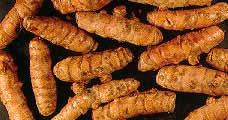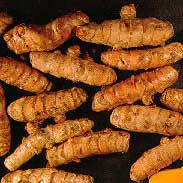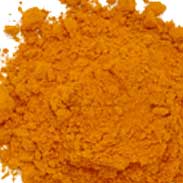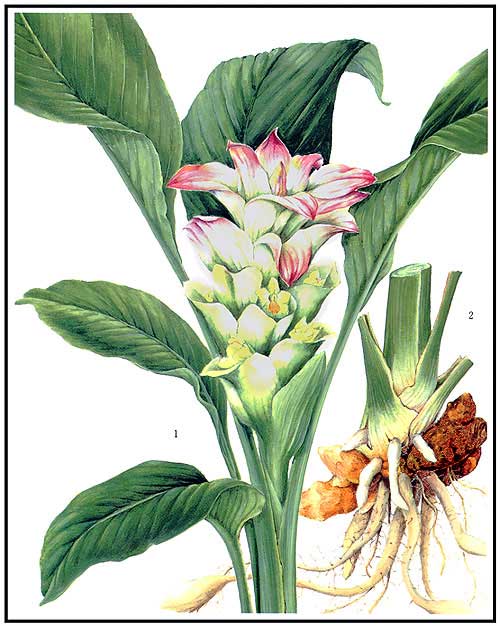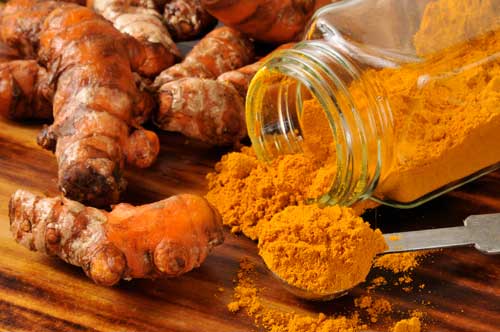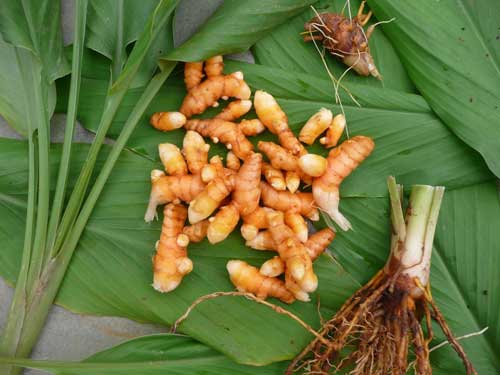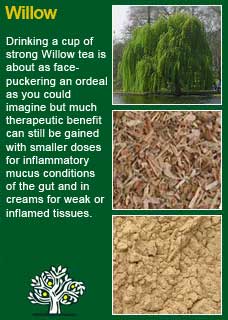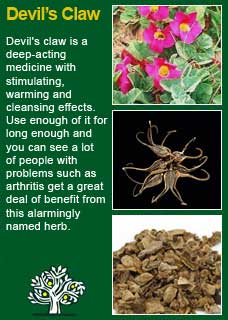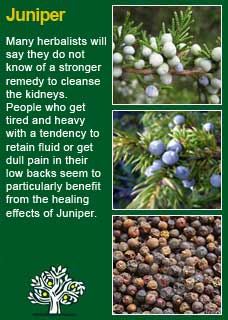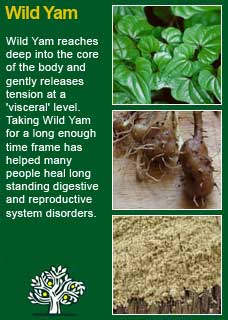
|
|
|
|
|||
| Our Pages ABOUT CONSTITUTIONAL MEDICINE
|
The roots of a plant that that colours curries and flavours a great deal of Asian and Indian cooking. Turmeric is a long-lived plant that produces copious roots that can be harvested each year. It needs much heat and water to thrive and is grown exclusively in tropical or sub-tropical parts of the world such as India, Haiti, Jamaica, Indonesia and the Philippines.
Turmeric is one of a group of herbs that seem to have actions on so many systems that you could say the whole body must feel its effects. The Immune system and blood health in particular are clearly benefited by Turmeric. Liver and gall-bladder disease are traditionally treated with it, as is high cholesterol. Diabetes has been traditionally treated using Turmeric. Heart and blood clotting disorders are also seen as part of its field of action. Turmeric is such an integral herb to ancient Indian medicine and culture that it is difficult to know where to begin describing its traditional uses. It has long been honoured in Ayurvedic medicine as a whole-body cleanser and a medicinal herb for such common problems as infections, dysentery, arthritis, fevers and digestive diseases. Physicians from ancient China likewise highly regarded Turmeric to treat liver and gallbladder problems, menstrual disorders and for chest congestion. Thomas Bartram writes that the actions of Turmeric include 'aromatic, blood purifier, stomachic, antioxidant, carminative, cholagogue, choleretic, bile stimulant, detoxifier and regenerator of liver tissue, anti-inflammatory for arthritis, skin disorders and asthma. Anti-tumour activity, anti-cancer. He quotes an article by Kerry Bone, published in the British Journal of Phytotherapy, that discusses 'the astonishing pharmacological properties of Turmeric whereby studies reveal it to be antioxidant, anti-inflammatory, anti-platelet, cholesterol lowering and anti-tumour. Curcumin, its yellow colouring, was the strongest free-radical scavenger tested, as effective as the antioxidant BHA (butylated hydroxyanisole) and its cholesterol lowering effect is equal to the drug clofibrate. It inhibits gram-positive bacteria, is highly toxic to Salmonella, and has a protective effect against hepatotoxicity. It also protects against DNA damage in lymphocytes'
~ Its help for inflammation in general sees many historical applications for Turmeric and in recent years modern science has become particularly interested in these ‘anti-inflammatory’ effects. There are now literally hundreds of studies into the main active ingredient of Turmeric (Curcumin) which appears to have many potent actions as an anti-oxidant and inflammation modulator with the added benefit of being extremely safe to take. ~ Clinical research shows that taking Curcumin, an extract of Turmeric, 72-144 mg daily for 8 weeks can reduce IBS prevalence by about 40% to 60% in otherwise healthy patients with IBS compared to baseline (Bundy, R., Walker, A. F., Middleton, R. W., and Booth, J. Turmeric extract may improve irritable bowel syndrome symptomology in otherwise healthy adults: a pilot study. J Altern.Complement Med. 2004;10(6):1015-1018) ~ Clinical research suggests that taking a Turmeric extract reduces the percentage of prediabetic patients who develop type 2 diabetes compared to placebo. After 9 months of treatment, 19 (16.4%) participants in the placebo group developed diabetes. All participants in the curcumin group lacked diabetes development. (Chuengsamarn, S., Rattanamongkolgul, S., Luechapudiporn, R., Phisalaphong, C., and Jirawatnotai, S. Curcumin extract for prevention of type 2 diabetes. Diabetes Care 2012;35(11):2121-2127) ~ Clinical research shows that taking Turmeric 2 grams/day orally in four divided doses for 7 days can relieve symptoms of dyspepsia in 64% more patients compared with placebo (Thamlikitkul V, Bunyapraphatsara N, Dechatiwongse T, et al. Randomized double blind study of Curcuma domestica Val. for dyspepsia. J Med Assoc Thai 1989;72:613-20) ~ Clinical research suggests taking Turmeric extract 1.4 grams/day orally in two divided doses for 3 months reduces levels of total cholesterol, low-density lipoprotein (LDL) cholesterol, very low-density lipoprotein (VLDL) cholesterol, and triglycerides compared to placebo in overweight hyperlipidemic patients aged 15-45 years-old. The numbers on this study were impressive: Compared to the placebo group after 90 days of treatment, participants in the turmeric extract group showed a significantly greater percent reduction in total cholesterol (3.0% vs. -49.5%), triglycerides (-6.7% vs. -65.4%), low-density lipoprotein (LDL) cholesterol (4.0% vs. -89.4%), and very low-density lipoprotein (VLDL) cholesterol (-6.7% vs. -65.4%) (Pashine L, Singh JV, Vaish AK, Ojha SK, Mahdi AA. Effect of Turmeric (Curcuma longa) on overweight hyperlipidemic subjects: Double blind study. Indian J Comm Health 2012;24(2):113-117) ~ Clinical research shows that some Turmeric extracts can improve symptoms of osteoarthritis. Taking Turmeric extracts reduces pain and improves functionality in patients with osteoarthritis of the knee after 7-12 weeks of treatment (Madhu K, Chanda K, Saji MJ. Safety and efficacy of Curcuma longa extract in the treatment of painful knee osteoarthritis: a randomized placebo-controlled trial. Inflammopharmacology 2013;21(2):129-36) Evidence also suggests that taking a non-commercial Turmeric extract works as effectively as the anti-inflammatory drug ibuprofen for reducing knee pain in patients with osteoarthritis (Kuptniratsaikul V, Thanakhumtorn S, Chinswangwatanakul P, et al. Efficacy and safety of Curcuma domestica extracts in patients with knee osteoarthritis. J Altern Complement Med 2009;15:891-7) (Kuptniratsaikul V, Dajpratham P, Taechaarpornkul W, Buntragulpoontawee M, Lukkanapichonchut P, Chootip C, Saengsuwan J, Tantayakom K, Laongpech S. Efficacy and safety of Curcuma domestica extracts compared with ibuprofen in patients with knee osteoarthritis: a multicenter study. Clin Interv Aging 2014;9:451-8) ~ In a placebo-controlled study Turmeric extract (1.5 grams per day for 30 days) significantly reduced the excretion of urinary mutagens compared to the placebo group - mutagens in the urine are used to measure the toxicity of the ingested substance (Polassa K, Raghuram TC, Krishna TP et al. Mutagenesis 1992;7(2):107-109) ~ Clinical research suggests that taking a whole food formulation containing broccoli powder 100 mg, turmeric powder 100 mg, pomegranate whole fruit powder 100 mg, and green tea extract 20 mg three times daily for 6 months prevents an increase in prostate specific antigen (PSA) levels in men with prostate cancer. The mean PSA levels increased by 78.5% in the placebo group and by 14.7% in the whole food formulation group. Also, 46% of men taking the whole food formulation showed final PSA levels that were the same or lower than initial PSA levels. This percentage was significantly greater compared to only 14% of patients in the placebo group (Thomas R, Williams M, Sharma H, Chaudry A, Bellamy P. A double-blind, placebo-controlled randomised trial evaluating the effect of a polyphenol-rich whole food supplement on PSA progression in men with prostate cancer--the U.K. NCRN Pomi-T study. Prostate Cancer Prostatic Dis 2014;17(2):180-6) ~ Clinical research suggests that taking curcumin 2 grams daily following laparoscopic cholecystectomy can reduce postoperative pain, fatigue, and the need for analgesics by the second postoperative week compared to placebo (Agarwal, K. A., Tripathi, C. D., Agarwal, B. B., and Saluja, S. Efficacy of turmeric (curcumin) in pain and postoperative fatigue after laparoscopic cholecystectomy: a double-blind, randomized placebo-controlled study. Surg Endosc. 6-14-2011) Also, taking curcumin 1.2 grams daily for 5 days following an operation for inguinal hernia and/or hydrocele reduces inflammation and tenderness by the sixth postoperative day compared to placebo (Satoskar, R. R., Shah, S. J., and Shenoy, S. G. Evaluation of anti-inflammatory property of curcumin (diferuloyl methane) in patients with postoperative inflammation. Int.J Clin Pharmacol Ther.Toxicol. 1986;24(12):651-654) ~ Clinical evidence suggests that taking the Turmeric constituent curcumin 1.1 grams/day orally for one month followed by 1.65 grams/day for another month reduces subjective symptoms of ulcerative colitis in patients taking 5-aminosalicylic acid (5-ASA) and corticosteroids compared to baseline (Holt, P. R., Katz, S., and Kirshoff, R. Curcumin therapy in inflammatory bowel disease: a pilot study. Dig.Dis.Sci. 2005;50(11):2191-2193) Other clinical evidence suggests that taking curcumin 2 grams/day orally in combination with sulfasalazine or mesalamine for 6 months can reduce the risk of ulcerative colitis recurrence compared to placebo in patients with inactive ulcerative colitis (Hanai, H., Iida, T., Takeuchi, K., Watanabe, F., Maruyama, Y., Andoh, A., Tsujikawa, T., Fujiyama, Y., Mitsuyama, K., Sata, M., Yamada, M., Iwaoka, Y., Kanke, K., Hiraishi, H., Hirayama, K., Arai, H., Yoshii, S., Uchijima, M., Nagata, T., and Koide, Y. Curcumin maintenance therapy for ulcerative colitis: randomized, multicenter, double-blind, placebo-controlled trial. Clin Gastroenterol.Hepatol. 2006;4(12):1502-1506) ~ Clinical research suggests that the Turmeric constituent, curcumin, can reduce some symptoms of rheumatoid arthritis (RA), including morning stiffness, walking time, and joint swelling, compared to baseline (Deodhar SD, Sethi R, Srimal RC. Preliminary study on antirheumatic activity of curcumin (diferuloyl methane). Indian J Med Res 1980;71:632-4) Other clinical research shows that taking the Turmeric constituent, curcumin, twice daily reduced RA symptoms more than diclofenac sodium 50 mg twice daily after 8 weeks of treatment (Chandran B, Goel A. A randomized, pilot study to assess the efficacy and safety of curcumin in patients with active rheumatoid arthritis. Phytother Res 2012;26:1719-25) ~ There are now over 500 published studies and articles on Turmeric, a PDF showing their titles, authors and when and where they were published can be found here
For some years now, against this proven and safe way of herbalism, there has been a rising tide of excessive caution and scare-mongering in many parts of the world. The same authorities that, not so long ago, decried herbal medicines as ineffectual, have now taken up a different adversarial position; that they are dangerous substances that should only be prescribed by Doctors, who of course have zero training in them. Unfortunately, the same unnecessary fear and worry has crept into many natural health websites and popular publications on herbs. Herbs that we have safely used for thousands of years, that have no reports of adverse reactions in the medical literature despite widespread use by millions of people, are suddenly described as contraindicated because of something that should have been seen as completely unimportant, or at the utmost a merely theoretical concern, such as a laboratory study on one of the herb's constituents to use an all too common example. I wonder sometimes if the writers of such articles feel that the herb will be more deserving of respect if it is thought to be a little bit dangerous, in other words more like a drug than something that has simply come out of the earth and been used by ordinary people for generations beyond count. There is just so much misinformation about herbal medicine on the internet now. Ludicrous claims and cautions abound in equal measure; it seems like one group are trying to make money out of the public whilst the other are busily trying to scare them off. I have to believe that the kind of reader who takes the time to read pages on herbs that are as extensive as this one is much less likely to be swayed by marketers or misinformers. I hope that you will keep your wits about you if you get conflicting opinions from people who have never really got to know these herbs, who have never worked with them, or learned how to use them safely and effectively. I want to remind you that the reason that herbs can never be patented and owned by any individual or corporation is because they are, and always will be, the People's medicine. They belong to all of us and it is my great hope in sharing this work that you will learn how to use them wisely for yourself, and the people you care for. Be safe, but do not be afraid.
Turmeric is a potent herb that can be simply superb when people have stuck 'heat' (inflammation) in their body. I heavily rely on it to help in numerous conditions where the body is doing everything it can to heal some kind of injury or illness but is caught in chronic inflammation and not getting anywhere. In such cases Turmeric can often do wonders to help move the healing process forwards. I use a great deal of Turmeric in my practice and frequently include it into herbal formulae from a liquid extract that we make ourselves, with astonishingly bright yellow cloths and glassware to prove it when the deed is done! In recent years, after much care to get a reliable and trustworthy source, I have been obtaining large quantities of a concentrated extract of Turmeric (90% Curcumin) which we combine with another concentrate from another great anti-inflammatory herb, Willow bark, and then send to a local company for automated encapsulation. A typical dose of this product is 4 capsules in a day, which is certainly in the higher range of the doses used in the above studies, but in acute or very serious conditions I will go even higher, to a maximum dose of 4 capsules twice a day, at least for a while. This is one of the great things about Turmeric, that it can be safely used in very high doses if needed because sometimes a strong push is needed when we want to get a shift in the terrain as quickly as possible. When there has been an obvious response to the Turmeric and Willow bark, and the patient is doing much better, they are encouraged to drop the dose back to just four capsules a day or less. They are in charge of how much they take and how long they use it for. If you who are reading this are studying herbal medicine or if you have your own reasons to want to understand this plant at a much deeper level then I warmly encourage you to take a tsp of dried Turmeric which is quite possibly already sitting in your kitchen panty, then slurry it up with a little warm water and drink. It's really not that hard to get down like this and you will certainly have taken a strong enough dose for your body to fully notice its 'arrival'. This old way of experiential learning can do more to show you the 'action' of the herb than any amount of academic study. If you do this with an open and attentive mind I think you may well get a visceral sense of your own of just how deeply Turmeric can penetrate into the core of the body and create its potent, warming, healing action. Further to that, if you would like to learn more about the ancient art of pulse testing, a simple but powerful way to ask the intuitive intelligence of the body for its responses to a herb by feeling the pulse whilst giving a tiny dose by mouth, read here Turmeric combines perfectly with Willow bark to help the body resolve inflammation or deal many types of difficult stuck conditions. It also works well with Devil's claw, Juniper & Wild Yam for deep arthritis or other conditions where there is just too much stuck 'heat' in the body that is getting in the way of its self-repair.
Much of the information here about the traditional uses of Turmeric is consistent with the model of thinking whereby one may treat problem A with plant B. There is value in this approach, especially in how it helps us pass on useful knowledge to one another, but it falls short in one vital area; and that is that people are not all cut from the same cloth! Something that works brilliantly for one person may do less for another -- why is this? Part of the reason is that people vary in their constitutions as to whether they are either hotter or cooler and, at the same time, either dryer or damper. This useful and rather fascinating subject is introduced further here Another big part of using the right herb when it is most needed comes from understanding the need to treat what is going wrong for the person that had led up to their getting a health condition. In this light, Turmeric can particularly offer its benefits when both a cleansing as well as a nourishing action is needed in the 'cycle of healing' - more about that here
Please understand that I cannot advise you, including on products or dosage, without seeing you in person in my clinic but for ideas
on how you might find a good herbalist in your area read here |
|
|
|
© 2011 R.J.Whelan Ltd
